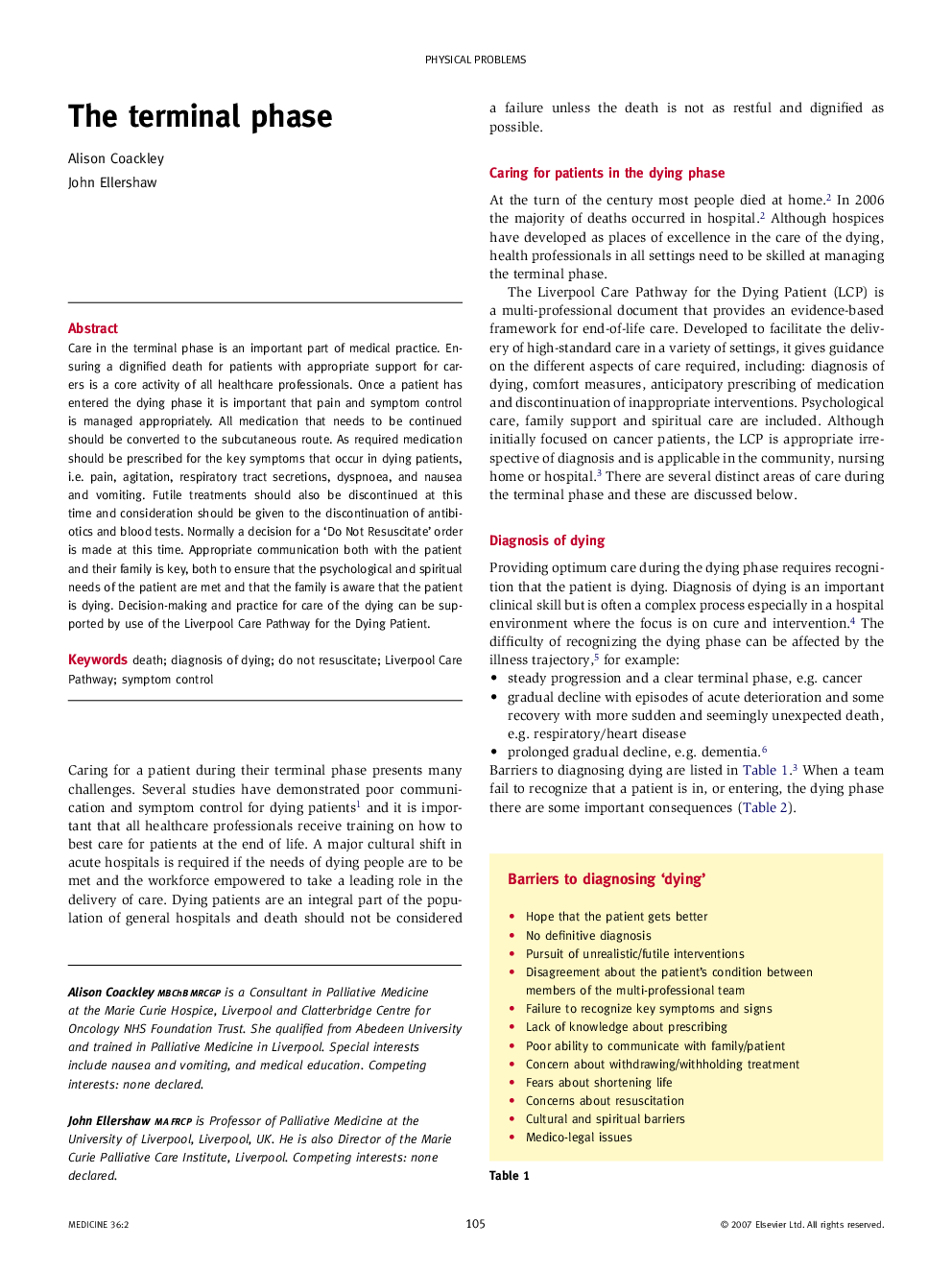| کد مقاله | کد نشریه | سال انتشار | مقاله انگلیسی | نسخه تمام متن |
|---|---|---|---|---|
| 3807518 | 1245367 | 2008 | 4 صفحه PDF | دانلود رایگان |

Care in the terminal phase is an important part of medical practice. Ensuring a dignified death for patients with appropriate support for carers is a core activity of all healthcare professionals. Once a patient has entered the dying phase it is important that pain and symptom control is managed appropriately. All medication that needs to be continued should be converted to the subcutaneous route. As required medication should be prescribed for the key symptoms that occur in dying patients, i.e. pain, agitation, respiratory tract secretions, dyspnoea, and nausea and vomiting. Futile treatments should also be discontinued at this time and consideration should be given to the discontinuation of antibiotics and blood tests. Normally a decision for a ‘Do Not Resuscitate’ order is made at this time. Appropriate communication both with the patient and their family is key, both to ensure that the psychological and spiritual needs of the patient are met and that the family is aware that the patient is dying. Decision-making and practice for care of the dying can be supported by use of the Liverpool Care Pathway for the Dying Patient.
Journal: Medicine - Volume 36, Issue 2, February 2008, Pages 105–108